Dear Friends,
I just received an email that is chock full of questions the new fukiran (Neofinetia falcata) grower wants answers to. I looked over my old posts and realized that the last time I wrote a post aimed at newcomers was back in 2014. It’s time for a new update! First, for basic culture info, please look at the Neo Care Sheet. I just finished updating it, including some revisions based on my experience. Here are answers to some more specific questions:
What is a Neofinetia “growth?”
One growth is a fan of leaves that could potentially be a single plant. When you look at a standard vanda, those are usually single fans; they’re just really tall. Neos don’t usually grow very tall; their growth habit tends to be bushier. They produce new growths from the base of the plant after the existing fans reach maturity; this is typical of monopodial orchids. The bigger your plant becomes, the faster you will see it increase in size as each mature growth makes new growths. Exciting!
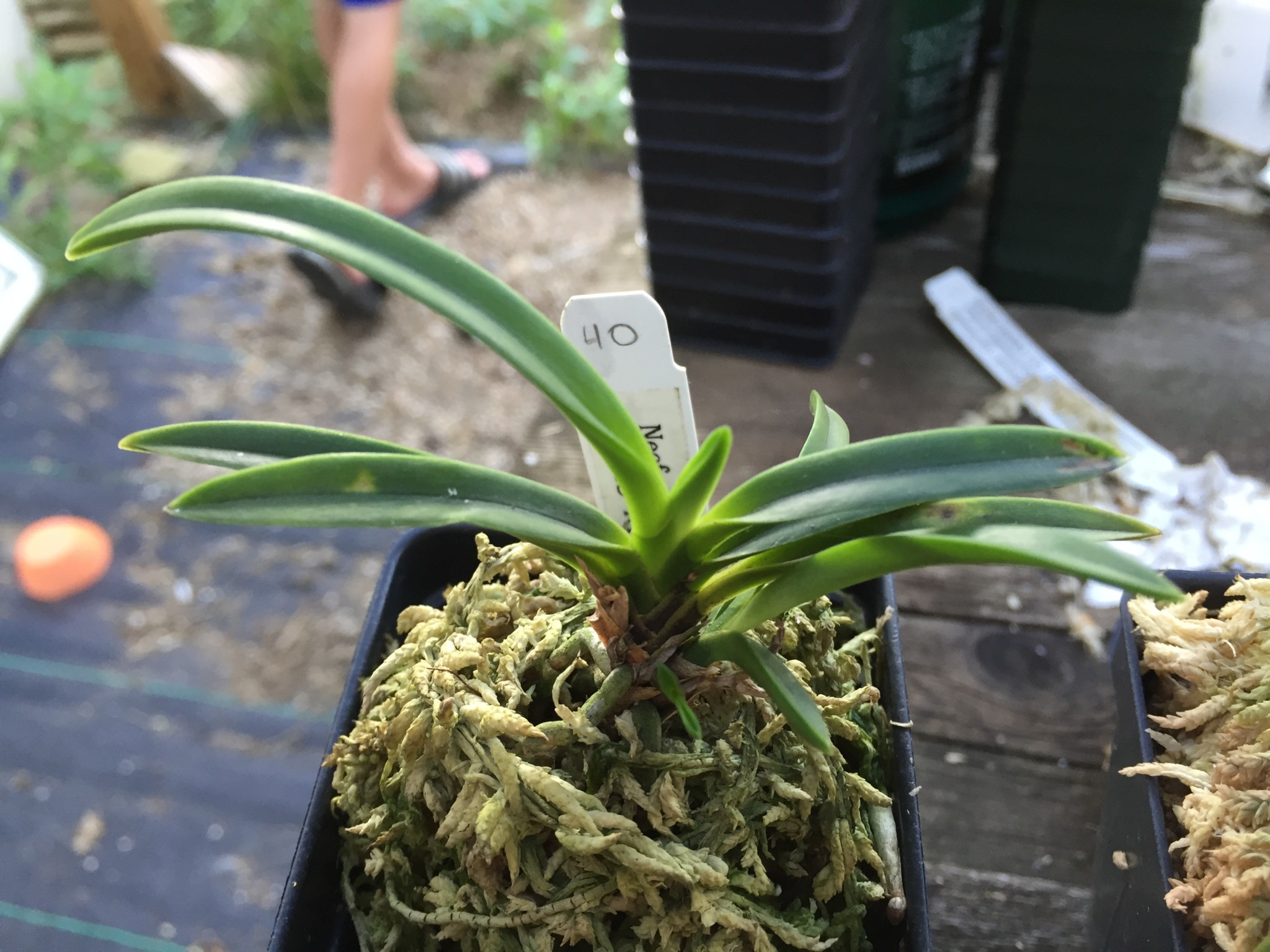
Single growth plant
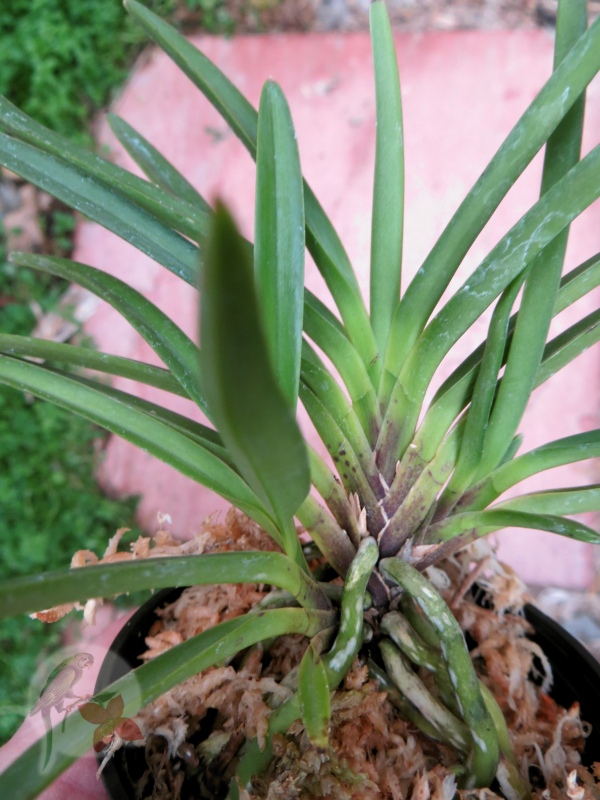
Three growth plant
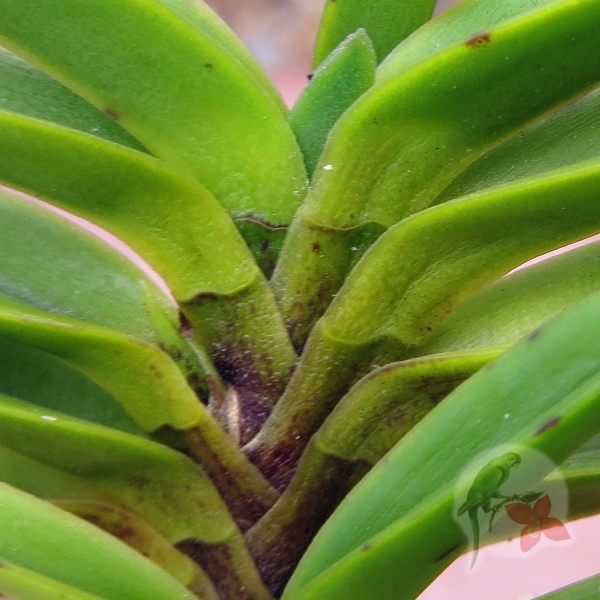
Senbazuru with beginning of flower spike in third leaf margin (left side)
Neofinetia Flowering Size
Neofinetia falcata reaches maturity (blooming size) when it has six leaves. Spikes arise from the third leaf margin from the top (see the tiny beginning of a spike in the right-hand picture above). Each mature growth in a plant can produce a flower spike, so the larger your plant is, the more spectacular your flower display will be. Sometimes a single fan will produce two spikes, one from the third leaf margin on each side! Each mature growth can bloom every year.
- White flowers
- Pink flowers
- Inflorescence on 3rd margin
- New spike on 3rd margin and evidence of spikes from previous years
Splitting Neofinetia
Technically, each growth of a Neo is capable of living on its own. To make sure the “split” is successful, each resulting plant needs to have good roots so it can feed itself. I like to see at least three roots. That said, some varieties, like Seiryujishi, fall apart almost as soon as a new growth reaches maturity, often with only two roots on a growth. Many pink-flowering varieties like Shutennou make many new growths without making any/many roots on the babies. Those varieties are very hard to split even when the plants are fully mature.
If you are a collector, you should only divide your plants (of any species) if (1) you want to share with a friend, (2) there is a dead/damaged growth you want to remove, or (3) you want to adjust the position of growths. This last reason is common in Japan where growers will dismantle plants and put the growths back together in the same pot but in a more visually pleasing arrangement. Larger plants, however, share roots and, therefore, resources which allows them to grow more quickly. Think about three people living in one house vs. three separate houses. Sharing a single house allows each person to spend their extra resources in more fun ways. When plants share roots, they can devote their extra resources to growth and flowers. That’s why I suggest you buy multi-growth plants when you can.
If you have other questions, please let me know so I can address them for other growers as well.
Happy growing!
Kristen

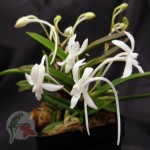
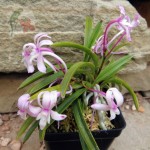
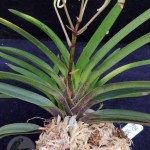
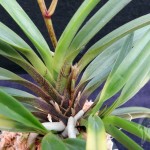
Pretty! This has been an incredibly wonderful post. Thanks for
supplying this info.
Hi Kristen,
Great post. I’m always learning something. I’m growing a Neo. bare rooted in a small net pot like & with my Vandas. New roots are everywhere with beautiful tips & new growths. Finally successful. Almost ready for another one. We’ve missed you here in NH.
Be well.
Hi Lee! I have missed you guys, too, believe me. When the plague passes, I hope I can do another speaking tour up that way. Big hugs to you!
Thank you for this information. I’ve had my Neos since 2000.
It’s my pleasure. Thanks very much for reading!
My Neo of 6 years and has never flowered. Any tips? I’ve started using orchid fertilizer at the end of this past winter in northwestern Mass. I also read thru all you tips.
Thanks!!
Hi, I have had a neo for a number of months. It started developing spikes in January. since then they have grown less than a centimeter. Though it grows roots and leaves like no other. Is this normal? i have it under bright light and use a slow-release fertilizer.
Dear Duane,
Thanks for your question which is a good one. Many people had reported spikes beginning as early as the previous fall, but did not think I had experienced it. I even had a bet with a friend that it didn’t happen to my plants. Apparently I wasn’t looking hard enough, because I totally lost that bet when I looked more closely. Turns out it’s VERY common for Neos to begin their spikes months before they really take off which is usually between April and May to open in June and July. You’re not doing anything wrong, and there’s nothing wrong with the spikes. They’re on standby waiting for the perfect time. It’s sorta like having a wrapped present sitting around for five months before your birthday!
Hi Kristen. Just discovered your site. Yeah! I’m a newbie to the Neofinitia. I have my first one called “white flamingo”. What would be the Japanese name? Looking at your pictures it very much looks like a yoroidoushi. When counting leaves to determine maturity do you count one side or both sides together? (I did tell you I was new at this.) thank you
Thanks Kristen for addressing my questions on leaf and growths. In the process of ordering my new Neo. So cool!
Hi Kristen. Do you ever sell Neos in spike or blooming? I also read during possibly the spiking season to make sure the plant doesn’t go completely dry. Hope that’s true. Anyway I would like to buy a Neo in spike or bloom.